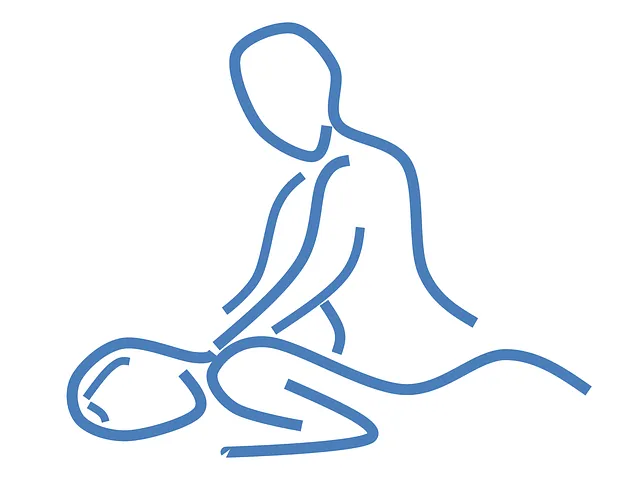Kaiser's EMDR (Eye Movement Desensitization and Reprocessing) therapy is an innovative, eight-phase program accessible through online video sessions, combining traditional techniques for effective trauma recovery. It helps individuals with PTSD, eating disorders, and chronic pain by reprocessing traumatic memories and negative beliefs, promoting brain healing and overall well-being. This method, backed by science and shown to be highly effective, offers rapid and lasting change, making it a powerful tool for personal growth and emotional resilience.
Overcome adversity with Kaiser’s EMDR program—a powerful therapeutic approach. This article delves into Understanding Kaiser’s EMDR Program, its role in addressing trauma and adversity, and the science behind Eye Movement Desensitization and Reprocessing (EMDR). Explore benefits for navigating life challenges and learn practical steps to get started with EMDR therapy. Discover how this innovative method can help you heal and thrive.
- Understanding Kaiser's EMDR Program: A Comprehensive Overview
- How EMDR Therapy Addresses Adversity and Trauma
- The Science Behind Eye Movement Desensitization and Reprocessing (EMDR)
- Benefits of EMDR for Overcoming Life's Challenges
- Getting Started with EMDR Therapy: Practical Steps Forward
Understanding Kaiser's EMDR Program: A Comprehensive Overview

Kaiser’s EMDR (Eye Movement Desensitization and Reprocessing) program offers a powerful therapeutic approach to help individuals overcome a wide range of challenges, from post-traumatic stress disorder (PTSD) to eating disorders and chronic pain. This innovative treatment method facilitates the brain’s natural healing process by helping clients reprocess traumatic memories and negative beliefs.
The program is designed to be comprehensive, combining traditional EMDR techniques with online video sessions for increased accessibility. Through this approach, Kaiser aims to empower individuals to confront and resolve distressing memories, emotions, and associated physical sensations. Whether it’s addressing the emotional trauma related to eating disorders or managing chronic pain’s impact on daily life, Kaiser’s EMDR therapy provides a structured framework to promote healing and enhance overall well-being.
How EMDR Therapy Addresses Adversity and Trauma

EMDR Therapy, offered by Kaiser as part of their mental health services, is a highly effective approach to addressing adversity and trauma. It works by helping individuals process difficult memories and experiences, reducing the emotional intensity associated with them. Through a structured eight-phase protocol, EMDR therapy encourages the brain to process traumatic events in a safe and controlled manner, ultimately leading to healing and resilience.
This innovative approach taps into the natural healing abilities of the brain, allowing patients to reframe traumatic memories and gain new insights. By focusing on both the past trauma and present-day challenges, Kaiser’s EMDR therapy for trauma healing empowers individuals to overcome adversity. Whether it’s addressing emotional distress stemming from a single incident or helping couples navigate relationship difficulties influenced by past traumas, this therapy offers a comprehensive solution. Moreover, understanding kaiser emdr therapy cost coverage can alleviate financial concerns, making healing more accessible.
The Science Behind Eye Movement Desensitization and Reprocessing (EMDR)

Eye Movement Desensitization and Reprocessing (EMDR) is a psychotherapy approach that has gained recognition for its effectiveness in treating trauma and post-traumatic stress disorder (PTSD). The science behind EMDR involves the brain’s natural healing process, utilizing bilateral stimulation techniques to help individuals process traumatic memories. During sessions, patients focus on distressing memories while simultaneously engaging in side-to-side eye movements, tapping, or other forms of rhythmic bilateral stimuli. This bilateral stimulation is believed to facilitate communication between the brain’s hemispheres, allowing for new, more adaptive memories to be formed.
Kaiser’s EMDR program builds upon this foundational understanding, offering comprehensive training and virtual appointments that make this therapy accessible to a wider range of individuals. The kaiser emdr training programs are designed to equip therapists with the necessary skills to help clients overcome adversity by reprocessing traumatic experiences. As an alternative or complement to traditional therapy, kaiser emdr vs traditional therapy has shown promising outcomes in helping people manage symptoms associated with trauma and move towards healing and recovery.
Benefits of EMDR for Overcoming Life's Challenges

EMDR therapy, as offered by Kaiser, has proven to be a powerful tool in helping individuals overcome various life challenges and achieve trauma recovery. This innovative program is designed to assist people in processing traumatic memories and negative beliefs, thereby reducing their emotional intensity. Through a structured eight-phase approach, EMDR addresses past, present, and future aspects of a traumatic event, allowing individuals to heal and regain control over their lives.
One of the key benefits of Kaiser’s EMDR program is its ability to facilitate rapid and lasting change. By helping patients reprocess traumatic memories in a safe and controlled manner, EMDR therapy can significantly reduce symptoms of post-traumatic stress disorder (PTSD), anxiety, and depression. The best results are often achieved when individuals engage with the program through dedicated professionals who specialize in EMDR therapy at Kaiser. These specialist therapists are equipped with the expertise to guide patients through the process, ensuring optimal healing and personal growth.
Getting Started with EMDR Therapy: Practical Steps Forward

Starting EMDR therapy with Kaiser can feel like navigating uncharted territory, but with the right approach, it’s a journey that offers significant rewards. The first step is to understand the basics of this powerful therapeutic method. EMDR, or Eye Movement Desensitization and Reprocessing, isn’t just about talking through traumatic experiences; it involves bilateral stimulation, often through side-to-side eye movements, which helps process and resolve distressing memories. This unique approach allows individuals to overcome adversity by reshaping their emotional responses to past trauma.
Next, find a qualified therapist within the Kaiser network who specializes in EMDR. Many Kaiser locations offer this service, including online Kaiser EMDR video sessions for added convenience. During your initial consultation, be prepared to discuss your personal history and specific challenges. Your therapist will guide you through the process, explaining each step along the way. While every person’s journey is unique, typical EMDR session duration can range from 60 to 90 minutes, allowing for a comprehensive yet focused approach to healing.
Kaiser’s EMDR program offers a powerful and effective approach to overcoming adversity and trauma. By utilizing eye movement desensitization and reprocessing, individuals can access their innate resilience and process difficult experiences in a safe and supportive environment. This therapeutic method has been backed by extensive research, demonstrating its ability to significantly improve mental health and overall well-being. With the right guidance and commitment, anyone can harness the benefits of EMDR therapy, leading to lasting personal growth and a brighter future.






